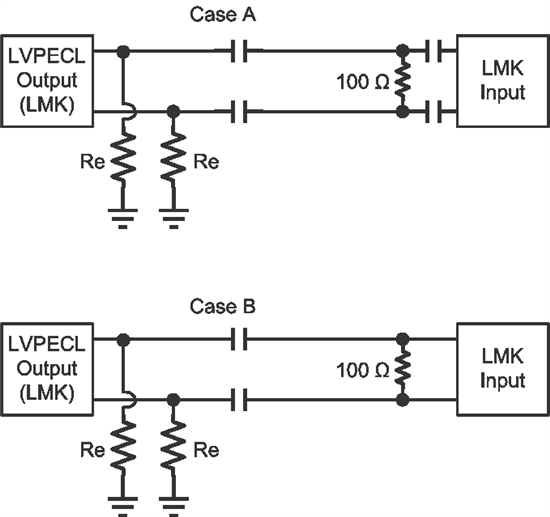Hello,
I am currently working on a design that contains two LMK01000s and I would appreciate some assistance with properly terminating my signals. The datasheet only specifies that CLKin signals are AC coupled but I don't see any data about impedance. The CLKout discussion (Section 3.4) is apparently a paste from another data sheet that refers to the OSCin pins on the LMK01000. I get a little nervous when the specifed pin doesn't exist on the part being discussed. The only LMK specific examples are in section 3.5 about sine wave inputs.
I have two specific cases to implement.
First case has an LMK01000 LVPECL output from the first LMK01000 driving a CLKin for the second LMK01000. I have the emittier resistors at the driving pins but what termination should I implement on the LMK01000 input for LVPECL?
Second case has a 1:1 BALUN driving the other CLKin for the 2nd LMK01000. What termination should I have on the LMK01000 input for the 50ohm signal? On which side of the blocking caps?
I also have one last question about the LMK01000 Eval Board. Both CLKin pairs show non-populated caps to ground on the negative input inside the blocking caps. Are they a necessary precaution?
Thanks,


